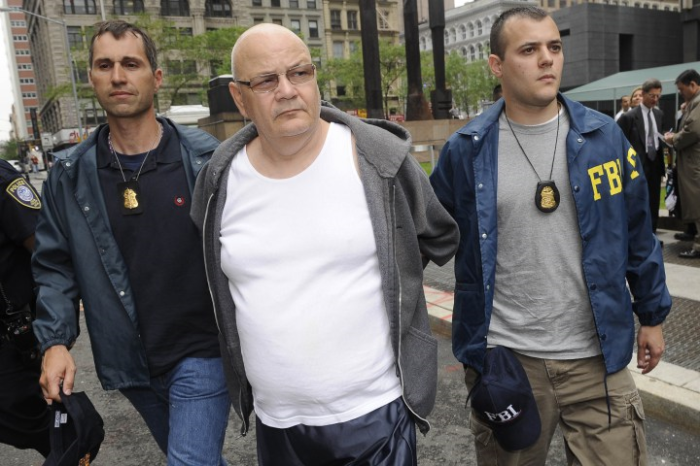











The picture takers must be very quick.
“Nightmare at 20,000 Feet” is the third episode of the fifth season American television anthology series The Twilight Zone, based on the short story of the same name by Richard Matheson, first published in Alone by Night (1961). It originally aired on October 11, 1963 and is one of the most well-known and frequently referenced episodes of the series. The story follows a passenger on an airline flight to notice a hideous creature wandering around the wing of the plane while it is in flight.
In 2019, Keith Phipps of Vulture stated that the episode “doubles as such an effective shorthand for a fear of flying”, making it endure in popular culture.

While traveling by airplane, Robert Wilson (William Shatner) sees a gremlin (Nick Cravat) on the wing. He tries to alert his wife Julia (Christine White) and the stewardess (Asa Maynor), but every time someone else looks out of the window, the gremlin hides itself near the engine, so Robert’s claim seems crazy. Robert admits the oddness of the gremlin avoiding everyone else’s sight but not his. His credibility is further undermined by this being his first flight since suffering a nervous breakdown six months earlier, which also occurred on an aircraft. Robert realizes that his wife is starting to think he needs to go back to the sanitarium, but his more immediate concern is the gremlin tinkering with the wiring under one of the engine cowlings, which could cause the aircraft to crash.
In response to his repeated attempts to raise an alarm about the gremlin, the flight engineer (Edward Kemmer) comes out to evaluate the situation and the stewardess gives Robert a sedative to stop him from alarming other passengers. Robert pretends to down it with water, but does not swallow and secretly spits it out. He then steals a sleeping police officer’s revolver, straps himself in to avoid being blown out of the aircraft, and opens the emergency exit door to shoot the gremlin.
Once the airplane has landed, everyone believes that Robert has gone insane. In a straitjacket as he is whisked away on a gurney, Robert tells his wife that he is alone in his knowledge of what really happened during the flight. However, the final scene reveals conspicuous damage to the exterior of one of the aircraft’s engines, confirming that Robert was right all along.
Could this be a more recent Gremlin encounter over Los Angeles?

Intriguing footage captured by a security camera shows a strange aerial object moving in the nighttime skies of Kansas City, MO. The host of Hidden Underbelly 2.0 has conjectured that we may be looking at a partially cloaked UFO. The video was reportedly recorded on October 13th, 2022, and when Anthony B. saw the object moving on his home screen, he ran outside to see it in person, but it had already vanished.
In the soundless footage, the curiously-shaped craft, which has a partially transparent quality, can be seen moving behind a set of trees, which suggests it has some solidity and is not simply a reflection.
But we have to remember this is a video. An Investigator I saw on TV a while back said he never trusts videos. They are easily doctored and hoaxed.
Rainbows over Winnipeg are very rare this late in the season.






The small archipelago of Magdalen Islands in the Gulf of Saint Lawrence, off the coast of the Canadian province of Quebec, is home to some 12,000 people. Nearly everyone of them is a descendant of a shipwreck survivor.
The Magdalen Islands, also known as Îles de la Madeleine, have a long history of shipwrecks. In the 18th and 19th centuries, an estimated 500 vessels fell victim to the shifting sands and shallow waters of the Magdalen Islands, in Canada’s predominantly French-speaking province of Quebec. In those days, there were no lighthouses in the area and charts were less than accurate. In the heavy winds, fog and choppy waters, navigation became a game of guessing and dexterity. Many ships along with their passengers perished in the waters. Those who survived chose to settle down and make the islands their home.
One of the most talked about shipwrecks on the Magdalen Islands is the immigration ship, the “Miracle”, which was transporting families from Ireland to Canada, when she went ashore at East Point during a violent storm. The Captain of the “Miracle”, Master H.H. Elliot, while expressing his gratitude and admiration for their Magdalen Islands rescuers in his report, highlighted the necessity for having lighthouses in these areas.
“This is to certify that the ship “Miracle” under my command wrecked on the Magdalen Islands on the 19th, of May, 1847, with 446 souls on board, and through the exertions of Mr. James Clark and his sons succeeded in saving nearly the whole of them and they deserve great praise for their exertions, both in supplying them with provisions and shelter.
I firmly believe a light on the east end of the island would save many a shipwreck, as Brion and Bird Rocks can be sure.”
Nearly twenty years before the incident, in 1828, a similar report was sent by Captain Edward Boxer to the Grand Admiral of Maritime Britain, in which he mentioned:
I have found a great need for lighthouses in the Gulf of Saint Lawrence. On this sea, navigation is so dangerous because of strong and irregular currents, and there is not a single lighthouse in all the Gulf. It is truly lamentable to find so many shipwrecks at different places on the coast… the number of lost lives is very large and certainly incalculable….”
Their complaints were finally heard, and the first lighthouses were erected in the early 1870s. Today, there are six lighthouses around the islands.
Many of the Magdalen Islands’ shipwrecks lie hidden at the bottom of the sea in various states of decay. But a few old hulks are visible from the beach, such as a 1963 shipwreck on the Corfu Island. Other pieces of wrecks are visible in dry ground in different forms, such as houses. Many homes in the Magdalen Islands are constructed from wood salvaged from the island’s many shipwrecks. A hundred-year-old church is built from the same material.
Today, the island is made up of mostly French-speaking people, with only about 550 residents speaking English. They are descendants of people who came from England, Scotland and Ireland. They live virtually isolated from the rest of the world, especially during winter when the gulf freezes making boat trips impossible. Their only communication link to the mainland is a wireless telegraph station.
Photo credit: Uladzimir Taukachou
Below: salt transport ship.
The best mobster nicknames were sometimes given by their peers, like Gaspipe or The Grim Reaper. Other times it was the press or even law enforcement who gave them names that they would always be known as, such as The Teflon Don, The Oddfather and The Lord High Executioner.

VINCENT AULISI, also known as “The Vet”
GIOVANNI VELLA, also known as “John Vella,” “Mousey” and “Little John”
STEPHEN DEPIRO, also known as “Beach”
ANTHONY CAVEZZA, also known as “Tony Bagels”
JOHN BRANCACCIO, also known as”Johnny Bandana”
ANTHINO RUSSO, also known as “Hootie”
FRANK BELLANTONI, also known as “Meatball”
CHRISTOPHER REYNOLDS, also known as “Burger”
VINCENZO FROGIERO, also known as “Vinny Carwash”
JOSEPH CARNA, also known as “Junior Lollipops”
DENNIS DELUCIA, also known as “Fat Dennis,” “Little Dennis” and “the Beard”
LUIGI MANOCCHIO, also known as “Baby Shacks,” “The Old Man,” and “the Professor”
ANTHONY DURSO, also known as “Baby Fat Larry” and “BFL”
GIUSEPPE DESTEFANO, also known as “Pooch”
JOHN AZZARELLI, also known as “Johnny Cash”
ANDREW RUSSO, also known as “Mush”
VINCENT FEBBRARO, also known as “Jimmy Gooch”
BENJAMIN CASTELLAZZO, also known as “Benji,” “The Claw” and “the Fang”
ANTHONY LICATA, also known as “Cheeks,” “Anthony Firehawk,” “Anthony Nighthawk,” “Nighthawk” and “Firehawk”
JOHN HARTMANN, also known as “Lumpy,” “Fatty” and “Fats”
VICTOR AMUSO, “Little Vic”, “The Terminator”
ANTHONY SALVATORE, “Gaspipe” Casso
JOHN BARBATO, “Johnny Sausage”
RICHARD BOIARDO, “Richie the Boot”
CHARLES CARROLLO, “Charlie the Wop”
WILLIAM CAMMISANO, “Willie the Rat”
DOMINICK CANTERINO, “Baldy Dom”
LOUIS CONSALVO, “Louie Eggs”
MICHAEL “TRIGGER MIKE” COPPOLA, “Trigger Mike” (died 1965)
GEORGE DECICCO, “Butterass”
JOHN DEROSS, “Jackie”, “Jackie Zambooka”
EDDIE GARAFOLA, “Eddie the Chink”
SALVATORE “SAMMY” GRAVANO, “Sammy the Bull” (1945-)
MATTHEW IANNIELLO, “Matty the Horse”
PHILIP LOMBARDO, “Benny Squint”, “Cockeyed Ben”, “Ben”
GIROLAMO PALERMO, “Jimmy Dumps”
LOUIS PIOGGI, [Poggi], “Louie the Lump”
THOMAS PITERA, “Tommy Karate”
HARRY RICCOBENE, “Harry the Hump”, “The Humpback”
GERLANDO SCIASCIA, “George from Canada”
JOHN ZANCOCCHIO, “Porky”

While these nicknames are funny, we must remember these guys were, and are, mean cold-blooded killers.
Edward Burtynsky, OC (born February 22, 1955) is a Canadian photographer and artist known for his large-format photographs of industrial landscapes. His work is housed in more than 50 museums including the Guggenheim Museum, the National Gallery of Canada, and the Bibliothèque Nationale, Paris.
Belridge oilfield 40 miles west of Bakersfield, California.
Davis-Monthan Air Force Base in Tucson, Arizona.
Los Angeles freeways.
Circular irrigation, Texas Panhandle.
Textile factory, China.
Pipeline northern Alberta.
Oil Sands sulfur beds, Fort McMurray, Alberta.
Semi truck jamboree, Tennessee.
Canal suburb, Naples, Florida
